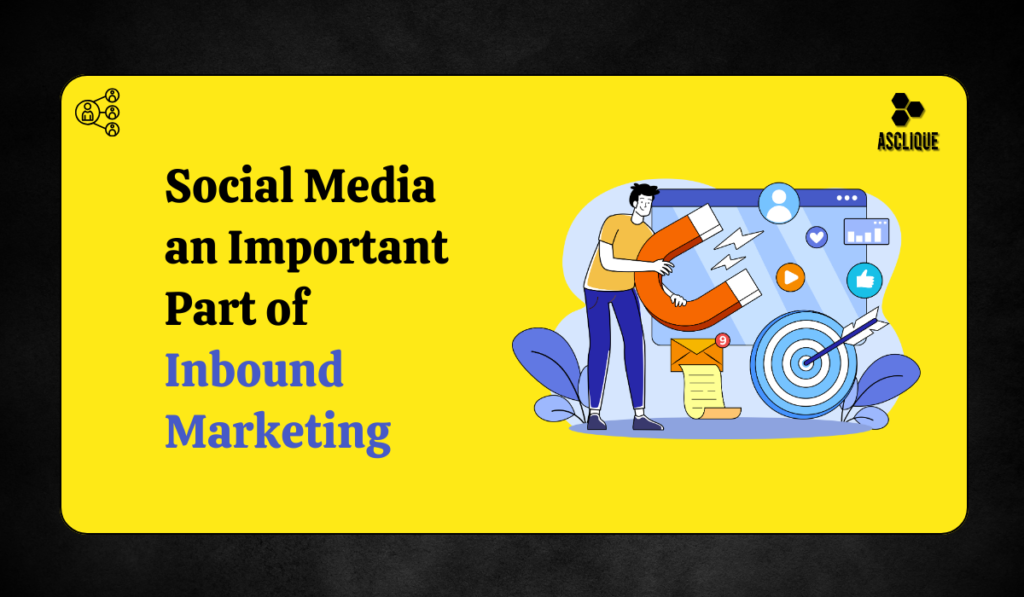Social media is no longer used to keep in touch with friends but has become a highly effective medium through which brands can engage and communicate with people meaningfully. Applied in inbound marketing, social media becomes one of the core channels of attraction, engagement, and delight of audiences.
Let’s talk about how social media is an integral part of inbound marketing and why it is so important for every brand that wants to reach out to more people and touch them online.
The Role of Social Media in Inbound Marketing
Social media in inbound marketing behaves differently since it permits companies to reach out to their target audiences naturally and without interruption. There is no selling directly through the social media platforms, but sharing helpful content, answering questions, and building a good experience for their followers.
This fosters trust and loyalty such that people will come to visit the brand’s website, become subscribers of content, and eventually buy from them through inbound marketing.
How Can Audience Segmentation Enhance Your Inbound Marketing Efforts?
Social media helps the brand target the audience in terms of demography, interest, or behavior; hence, brands can easily target those audiences who will benefit from its products or services. It enables inbound marketers to reach the people at the right time with the right message.
The use of personalized marketing will increase engagement levels up to 20%, which is why this has emerged as an important tool that brands can use when following an inbound marketing approach.
Boosting Brand Awareness with Social Media in Inbound Marketing
- Building Brand Identity on Social Platforms: Social media is a visual space where brands can display personality, values, and voice, making the brand recognisable and appealing to its followers.
- Reaching New Audiences Organically: Brands can reach a wider audience without an additional cost and improve brand awareness naturally through hashtags, user shares, and algorithms on the platform.
Why is Goal Setting Important to Inbound Marketing?
Goal setting is an important determinant of any marketing approach, inbound marketing on social media not being an exception. Moreover, Specific goals become determinants in terms of the targeted 20% increase in followers within a quarter or in terms of 100 new leads per month.
Well-defined goals will also clearly clarify the kind of content to be posted, the nature of targeted audiences, and the publishing rate. Indeed, research proves that successful campaigns are 30% more likely to work when goal-oriented.
Generating Quality Leads through Social Media for Inbound Marketing
Engaging Prospects with Valuable Content
- Share informative blog posts, eBooks, case studies, or webinars that address audience pain points.
- Utilize social media to guide the prospect along the buyer’s journey while targeting them with the right content.
Utilizing Lead Generation Tools on Social Platforms
- Such platforms like Facebook and LinkedIn have direct features to capture contact information.
- Use as many lead ads and contact forms as possible to automate the lead generation process.
Using Social Media for Effective Content Distribution in Inbound Marketing
Choosing the Right Platform for Each Content Type
- Instagram: Best for visual and story-based content. Builds brand personality.
- LinkedIn: Ideal for sharing articles, industry insights, and professional content.
- Facebook: A multipurpose video post platform or community discussion host.
Encouraging User-Generated Content for Wider Reach
- User-generated content is that which builds trust, such as when customers share their testimonials, reviews, and photos.
- UGC reaches wider as users distribute your content within their own networks, thereby creating organic exposure.
Social Media Analytics in Inbound Marketing
Analytics is part of knowing whether the people do show their interest in the success campaigns of inbound marketing on social media or not. Facebook, Instagram, and LinkedIn will provide all the analytics on engagement, follower growth, and lead generation.
Marketers can determine the best type of content to share with their audience through metrics such as clicks, shares, and conversions. In fact, a study showed that data-driven strategies for brands are 23% more likely to be successful, which makes analytics an essential component of social media in inbound marketing.
Conclusion
Creating connections between the brand and its target audience on a deep level while creating trust and impressions that never fade away is what inbound marketing via social media does. Segmentation through social media leads the company to the potential customer, generating leads by means of brand awareness, using it for content distribution analytics, and much more to be used in converting the targeted audiences into loyal customers.
Accepting social media as a vital aspect of inbound marketing does not only generate visibility but also leads to relationships that spur long-term growth.
FAQ’s
What is the meaning of “inbound marketing”?
Inbound marketing attracts customers through useful and relevant, non-interruptive, valuable content and interactions.
How does inbound marketing work?
This is marketing that makes use of creating attractive content for creating a relationship with the audience and feeding leads toward readiness-to-buy.
What are the benefits of Inbound Marketing?
This makes building trust, increasing brand awareness, quality leads, and high customer satisfaction just a few of the many advantages in using this type of marketing.
Why is social media important for inbound marketing?
Social media contributes significantly to this process because it can reach the target audience, share valuable content, and get in touch with potential clients organically.

